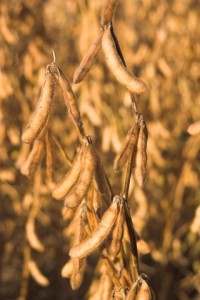 I’ve long been intrigued by the replacement of hormone replacement therapy with soy isoflavones. Yet, studies looking at their effectiveness for alleviating hot flashes and other vasomotor symptoms have been mixed. The reasons for this are multiple, and point to such factors as dose and actual composition of the supplements used, severity of hot flashes and how often women are taking isoflavones over the course of the day. Researchers have also discovered that only 20% to 30% of Westerners produce equol, (there’s even a dispute over this stat) a component of the potent isoflavone dadzein that has an affinity for estrogen and appears to be slowly cleared from the body;(note that both of these factors contribute to its beneficial effect against flashes.
I’ve long been intrigued by the replacement of hormone replacement therapy with soy isoflavones. Yet, studies looking at their effectiveness for alleviating hot flashes and other vasomotor symptoms have been mixed. The reasons for this are multiple, and point to such factors as dose and actual composition of the supplements used, severity of hot flashes and how often women are taking isoflavones over the course of the day. Researchers have also discovered that only 20% to 30% of Westerners produce equol, (there’s even a dispute over this stat) a component of the potent isoflavone dadzein that has an affinity for estrogen and appears to be slowly cleared from the body;(note that both of these factors contribute to its beneficial effect against flashes.
Despite these challenges, what would happen is you simply upped the dose and/or frequency? Would it change the’ iso what’ or ‘who’ to an actual ‘iso yes!?’
That’s exactly what researchers sought to learn when they recruited 130 peri- and post-menopausal women with severe hot flashes (i.e. five or more a day). Women who produced equol and those who did not were separated and then randomly asked to take placebo, low dose (33 to 66 mg/day) or high dose (110-200 mg/day) equol or placebo capsule (s) and take them once daily or two to three times daily. They also kept daily hot flash diaries, assessing each hot flash by its intensity, daytime or nighttime occurrence and how bothersome they were. They met with the research team face to face twice — 9 weeks in, and 3 weeks after the study completed.
The findings made it quite clear that dose and frequency are almost as important as whether or not a person is able to produce equol. In fact, when women took higher doses of isoflavones more frequently, they had 2.4 per day fewer hot flashes than women taking the lower doses just once a day. And, the flashes were significantly less severe. What’s more, most of these benefits were realized during the night, when, as most of us know, flashes and sweats are especially disruptive. Moreover, there was not much of a difference between women who are able to produce equol and those who are not; while these women did experience greater declines (as much as 10%) in both how intense their flashes were and how frequently they occurred, the difference was apparently not statistically significant.
So, let’s cut through the scientific clutter:
- Higher doses of isoflavones tend to have a greater effect than lower doses
- More frequent dosing (two to three times a day) appears to be more beneficial than once a day dosing.
- Greater benefits are likely to be seen in women who naturally produce equol, especially when it comes to hot flash intensity
- Both perimenopausal and menopausal women may potentially benefit from higher, more frequent dosing.
This type of research is just beginning and the findings need to be teased out in larger numbers of women. It’s also unclear if spreading the lower dose out throughout the day would make a difference. Still, what these findings do bring to light is an evolution of thinking and that’s what makes me most excited. Rather than determining that isoflavones are useless, researchers are finally starting to treat them as though they were pharmaceutical agents, using them in randomized clinical trials, varying doses, frequency and patient populations and truly, thinking outside the box.






